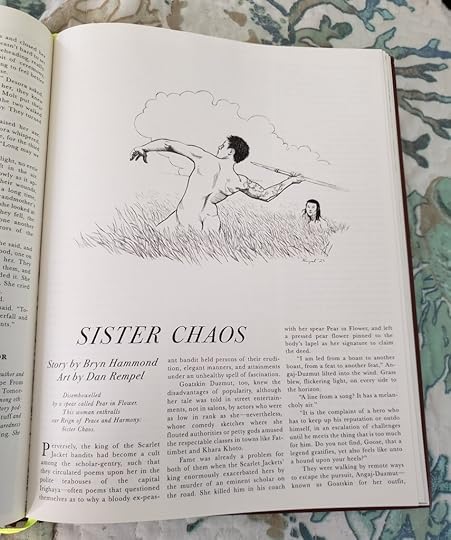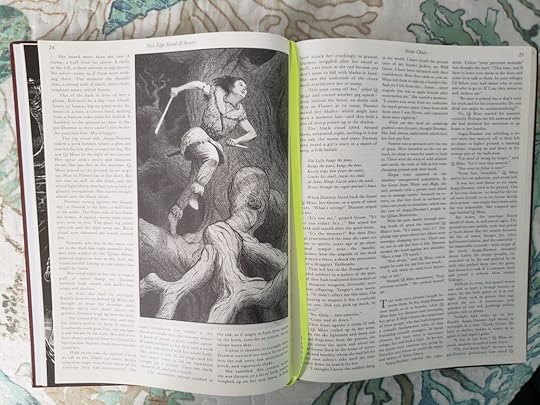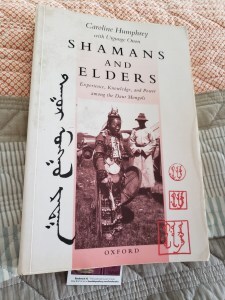On story process: ‘Sister Chaos’
 As usual, a story is an amalgamation of elements, and my main job seems to be to hammer them together, the ideal to make them augment each other. This post is a look at a few elements of ‘Sister Chaos’, my story in New Edge Sword & Sorcery #1.
As usual, a story is an amalgamation of elements, and my main job seems to be to hammer them together, the ideal to make them augment each other. This post is a look at a few elements of ‘Sister Chaos’, my story in New Edge Sword & Sorcery #1.
To start with the title. I meant this story to focus on chaos – enough to let me use the title, which I’d had sitting around. When I first ventured into S&S, not two years ago, I knew chaos was going to be a theme. In my sketches-to-self are statements too crude to say to other people, but this is a process post, so in their naked inglory:
I want to make a case for chaos, I argue on the side of chaos… Orderly society has rarely been on my side, and I think chaos opens up a lot of possibilities. So I want to haul on those law-order axes, and those good-evil axes, and make sure they align to my truth, and my experience. Who’s doing damage, that I feel and know, and fear? This is what I have to quiz myself on, when I come to write a story.
Now, at an certain editorial stage I was told I’m to be in the Michael Moorcock issue, whose Elric stories have mused on Law and Chaos for half a century and hugely influence the ideas about chaos you come across in fantasy. It was cheeky to continue my focus. But S&S had seemed to me an opportunity to talk about chaos, in large part because of that influence of his, so, to put my own spin on chaos is only tribute.
Besides, my spin is less existential, more social (not that those thing don’t interact). As a challenge – note that challenges are things one sets oneself as writer, prior to being a challenge to the reader – I have Qi Miao ‘murder an eminent scholar’ on the first page. Often her kill-fare is listed as constables, magistrates, officials of the state machinery. A couple of pages later we find out the scholar was an official too, and in his judicial duties used to sentence peasants to the lopping off of limbs. That the ‘famous prose stylist’ and the judge are the same person is a point neatly captured in the term ‘scholar-official’, familiarly used in histories of China. But even without that term, the point is that cultural and legal forces of order tend to be interlocked. It was likewise in the history of Europe. When Qi Miao flytes the edifice of the classics, she is also applicable to the European intellectual elite. You can transpose to Greek and Latin and the patriarchal order of the West, and she won’t change her flyte a jot.
Here’s a tangent, from my back story as a historical novelist. The Mongol invasion of China, of which we hear intimation in ‘Sister Chaos’, led to social upheavals too and intellectual disruptions. Khubilai Khan suspended the civil service entry examinations in the classic texts. Often historians accept the perspective of scholars who watched their hold on affairs severely weaken and who left written sources outraged at barbarian crudity and attacks on culture. But Khubilai had his reasons: a diversity of ethnic make-up in his government led to a diversity in the ideology behind advice; he was determined to draw on a wider range of talents than those shaped by study of the ‘Confucian’ classics. (You can read a lot more about Khubilai’s innovations in this post).
Who is order for? Who gets left out?
In my story, Goatskin and Goose visit the margins where they meet a queer shaman and a spirit of disparate pieces.
Anthropological sword & sorcery?I pinch my subtitle from Anthony Perconti’s comments on my story.
Anthropological sword & sorcery? No doubt, after I came straight from a heavily anthropological historical fiction. In that genre my cry has been, ‘Read anthropology. History books won’t be nearly enough.’ Anyhow, I have utilized the same sourcebook. My spirit Galierti owes to the account of Holieri in Shamans and Elders: Experience, Knowledge, and Power among the Daur Mongols by Caroline Humphrey with Urgunge Onon. I quote a bit on Holieri, ‘the Shattered Ancestor’, in my review of this book:
Although they might use the same idioms, such as ancestry and imperial power, shamans suffused these ideas with subversive content, thus creating a distinctive sense of identity for the people… [T]hey made almost nothing, in shamanic practice, of their own real patrilineal ancestors and they reached for a lateral, inclusive, and metaphoric idea of what an ancestor might be.
Towards the ancestor spirit Holieri went humans and body parts of humans, as well as
animals, birds, aquatic creatures, artefacts, and mythic beings … Self-identity was not located inside a unique bounded ‘we’ but shattered outwards to embrace all forms including the broken, the imperfect, and the humble … Its placing consisted of a wooden box, with two doors or a curtain in front, containing a series of carved objects, representing tens of spirit-parts… People in Horli told me that it could also be made very simply: one took a bit of wood in the shape of a human, broke it, and worshipped the parts.
There is a strong through-line from my story ‘Ill Spirits’, although that wasn’t sword & sorcery.
Outsiders‘Outsiders’ is the theme common to my elements. I have written before about what sword & sorcery means to me, and the answer is mostly, it’s known for outsider perspectives.
And that always needs to be pushed further. Conan? When he walks into an inn he intimidates every patron and the men in the joint (I’m told – I don’t know) want to be him.
I’ll do heroes who make less impression, have less physical presence, who walk into a bar and risk stares of hostility or glances of contempt. I guess that means I don’t want wish-fulfilment from my sword & sorcery fiction. I am a serious sort who seeks much exploration of the real in her escapism. I value Janrae Frank’s ugly portrait of a woman with post-combat trauma. I want to write about poverty, although that’s hard even in S&S fantasy where your happy-go-lucky protagonists lurch from one temporary embarrassment to another. And how do you write about homelessness in a genre where every hero wanders? Still, Delany solved most of these problems back in Nevèrÿon (homelessness, in particular, important to Delany: see this beautiful profile).
I haven’t achieved these things yet. In a way I did most towards them in my first stab, Goatskin’s origin story, which is slighter as a story. One needs aims and ambitions, to keep writing.
Antelopes and camelsMy ‘bulb-nose’ is the saiga antelope. I made up nothing about the saiga.
Here’s the Saiga Resource Centre with as much as you want to know about this endangered species of the steppe.
Confession time: I have never seen the 80s Conan movies. But I watched the clips of Conan punching camels (frankly, I hope they ‘taunt him a second time’ as the French knight said to King Arthur). However, at certain junctures it’s kind of necessary to punch a camel. I couldn’t resist Angaj-Duzmut telling us that’s a real thing.
A puzzle, a poemIn the first scene Angaj-Duzmut quotes a line or two ‘from a song’, and the first person to identify it wins … I don’t know what kind of prize, but see me. Its origin lies far from the steppe. Something I’ve wanted to use for decades.
As an extra, here’s a poem I wrote, a companion piece to the story. It is, you might notice, contra Yeats [‘The Second Coming’]. Which is at least as cheeky as writing about chaos in the Moorcock issue. I’m never going to see eye to eye with a poem where ‘the centre cannot hold’ is a bad thing (I do love Yeats, though: ‘Crazy Jane Talks with the Bishop’, those fey poems about Fergus and Wandering Aengus).
What Rough Beast?
What rough beast slouches out of desert sands,
Or vast salt marshes or bleak windswept steppe,
Towards your holy city?
Against your bastions what frail wild four legs,
What low glimmer of horn or weightless hoof
That you chased from your purview a century ago?
What scapegoat back from the wilderness,
Having eaten of your sins, nothing else to fat it,
What skinny goat? What creature slain and risen?
Its name is Chaos –
But you won’t think that suits
Such a scrawny rag in such a quiet return.
Nevertheless, our name – we whom you refused,
And thought not of, and pushed
To the gutter of the street the other day.
Your humblest, us.
Cut-off limbs, clapped-out soldiers,
A starved child or two,
Skull of stray cat, foot of tiny wren.
Unconsidered fragments.
What rough beast?
With thanks to Dan Rempel for the wonderful art to my story. Thanks to Oliver Brackenbury who has been the most wonderful editor.
I’ll leave you with a link to June Orchid Parker’s story process post, ‘The Writing of ‘How Many Deaths Till Vengeance?’’.
And of course, a link to the New Edge Sword & Sorcery website. There’s an exciting year ahead: please sign up to the newsletter and stay in the loop.






